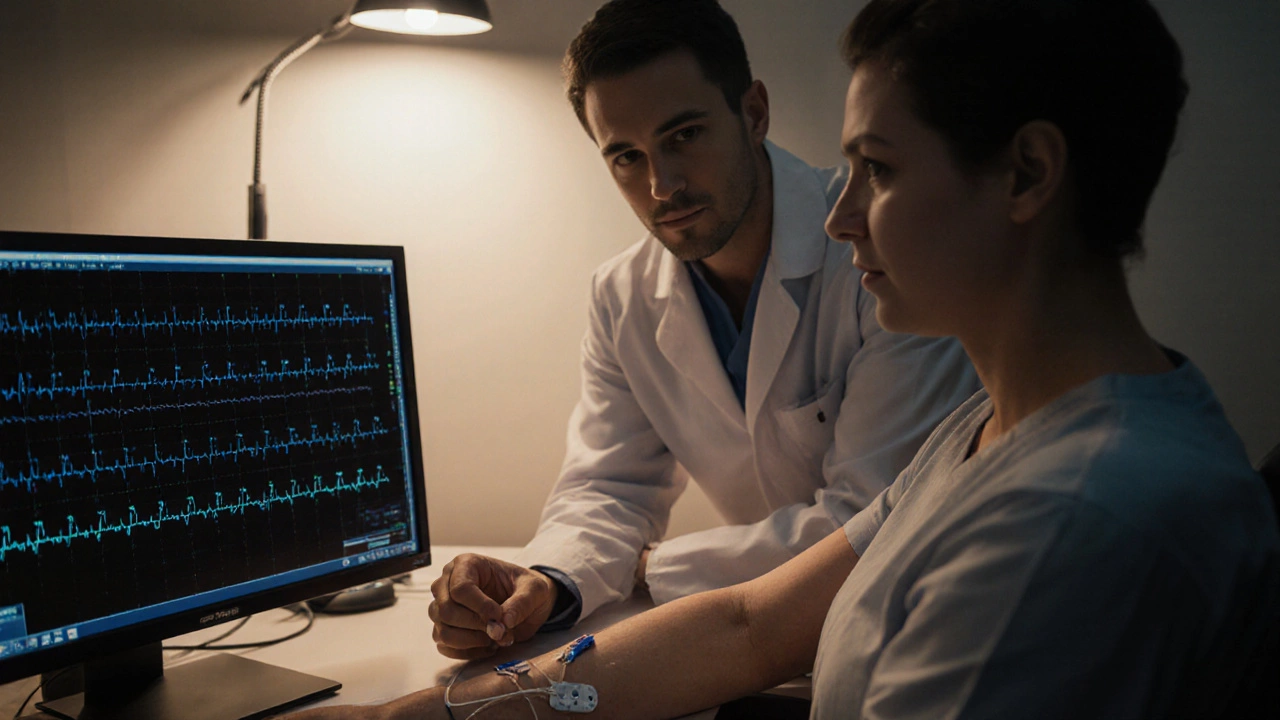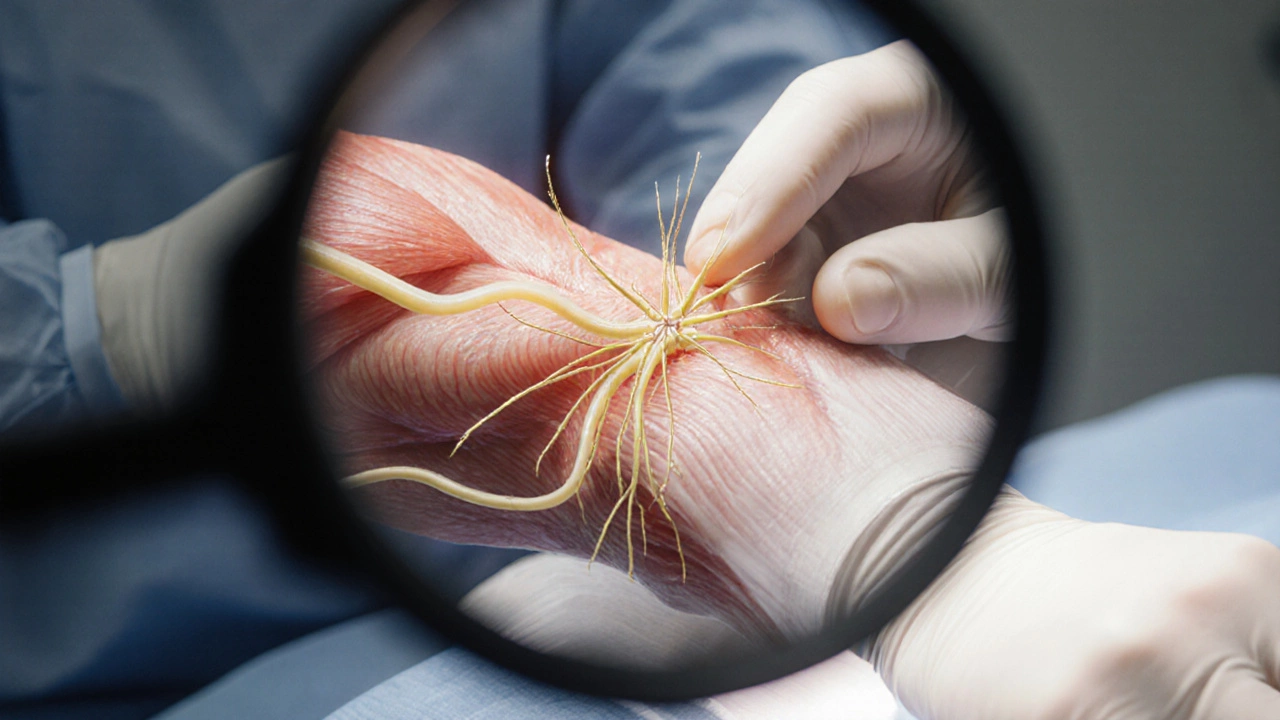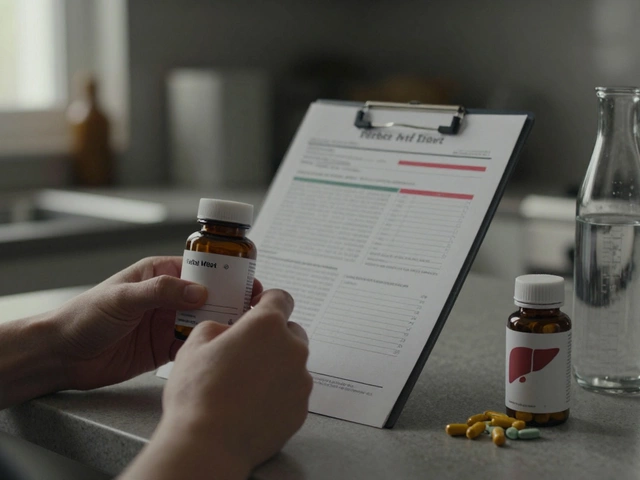- Home
- Orthopedics
- Can My Nerve Damage Be Repaired? What You Need to Know Now

Can My Nerve Damage Be Repaired? What You Need to Know Now
Nerve Damage Recovery Estimator
Recovery Assessment Tool
Estimate your potential nerve recovery based on key factors from the article. This tool is for informational purposes only and should not replace professional medical advice.
Recovery Potential
When you feel tingling in your fingers that won’t go away, or your foot just won’t respond when you try to lift it, it’s not just discomfort-it’s a signal. Nerve damage isn’t something you can ignore. It doesn’t heal on its own like a scraped knee. But the question isn’t just whether it’s damaged-it’s whether it can be fixed. And the answer isn’t yes or no. It’s maybe, and here’s how you find out if you’re in that maybe group.
What Does Nerve Damage Actually Mean?
Nerves are like electrical wires running through your body. They carry signals from your brain to your muscles so you can move, and back from your skin so you can feel heat, pain, or a light touch. When they get crushed, cut, stretched, or compressed for too long-say, from a car accident, a fall, or even years of repetitive strain-they stop working properly. That’s nerve damage.
Not all nerve damage is the same. There are three main types:
- Neuropraxia: The nerve is bruised or compressed but still intact. Signals are blocked, but the wire isn’t broken. This is the mildest form.
- Axonal injury: The nerve’s inner signal-carrying part (the axon) is damaged, but the outer sheath stays mostly intact. Recovery is slower but possible.
- Neurotmesis: The nerve is completely severed. This is the most serious type and usually needs surgery.
Knowing which one you have changes everything. A pinched nerve from a herniated disc? That’s often neuropraxia. A deep cut from glass or metal? That’s likely neurotmesis. Your doctor won’t guess-they’ll test it.
How Do Doctors Know If Your Nerve Can Heal?
There’s no single scan that says, “Yes, this nerve will come back.” Instead, doctors use a mix of tools. First comes the physical exam: Can you wiggle your toes? Can you feel a light brush on your foot? Then come the tests.
Nerve conduction studies measure how fast signals travel through your nerves. If the signal is slow or missing, it tells them where the damage is and how bad it is. Electromyography (EMG) checks if your muscles are still receiving signals. If muscles are silent for too long, they start to waste away-and that’s a red flag.
These tests aren’t just for diagnosis. They’re used to track progress. If your nerve conduction improves over 3-6 months, that’s a good sign. If it doesn’t change? That’s when surgery becomes a real option.
Can Nerves Heal Themselves?
Yes-but only under the right conditions. Your body has a built-in repair system. Nerves grow slowly, about 1 millimeter per day. That means if you have a nerve injury in your wrist, and the damage is 15 centimeters up your arm, you’re looking at 150 days of waiting-minimum.
But here’s the catch: nerves only regrow if the outer sheath is still there. Think of it like a garden hose. If the rubber coating is intact, the water (signals) can find its way back. If the hose is ripped open, the water leaks out. That’s when the body can’t fix it on its own.
That’s why time matters. If you wait too long-beyond 12 to 18 months-the nerve endings die off, and the muscles they control turn to scar tissue. Once that happens, even surgery can’t bring back movement or feeling.

When Is Surgery the Only Option?
Surgery isn’t the first step. It’s the last resort when nerves don’t heal naturally. But when it’s needed, it can change everything.
Nerve repair is done when the ends of a severed nerve are still close together. The surgeon cleans the ends and stitches them back together with microscopic threads. Success rates are high if done within 72 hours of injury.
Nerve grafts are used when there’s a gap. A piece of nerve-usually taken from your calf or forearm-is used as a bridge. It’s not ideal, because you’re trading one nerve problem for another. But it’s better than permanent numbness.
Nerve transfers are the newest and often most effective option. Instead of trying to fix the broken nerve, surgeons reroute a less important, healthy nerve to take over its job. For example, if you lost function in your hand from a brachial plexus injury, they might reroute a nerve from your chest to restore finger movement. It sounds wild, but it works. Studies show up to 70% of patients regain useful hand function after nerve transfers.
Recovery after surgery isn’t quick. You’ll need months of physical therapy. Your brain has to relearn how to control those muscles. That’s why compliance matters. Skip therapy, and even the best surgery won’t help.
What Can You Do While You Wait?
Waiting for nerves to heal is frustrating. But you’re not powerless. Here’s what actually helps:
- Physical therapy: Gentle movement keeps muscles from stiffening and trains your brain to reconnect. A therapist will guide you through exercises tailored to your injury.
- Electrical stimulation: Small, safe pulses can help keep nerves active while they regrow. Some clinics use devices you can wear at home.
- Good nutrition: Nerves need vitamin B12, omega-3s, and antioxidants. Eat salmon, eggs, leafy greens, and nuts. Avoid sugar and processed foods-they worsen inflammation.
- Manage pain: Nerve pain can be sharp, burning, or electric. Medications like gabapentin or pregabalin are often prescribed. But they don’t heal nerves-they just make the pain bearable while healing happens.
Don’t fall for miracle cures. No supplement, oil, or device on the internet can regrow a severed nerve. Be skeptical. Stick to what’s proven.

What Happens If It Can’t Be Fixed?
Not every nerve injury can be repaired. Sometimes, the damage is too old, too deep, or too widespread. That doesn’t mean your life is over-it means you adapt.
There are options:
- Tendon transfers: A working muscle is moved to replace a dead one. For example, if you can’t lift your wrist, a muscle from your forearm can be reattached to restore grip.
- Braces and splints: These support weak limbs and prevent contractures. They’re not glamorous, but they keep you moving.
- Functional electrical stimulation (FES): Devices that stimulate muscles to contract can help you walk or grasp objects again-even without nerve signals.
Many people with permanent nerve damage live full, active lives. It’s not about getting back to exactly how you were. It’s about finding new ways to do what matters to you.
How Long Do You Have to Decide?
This is the most important thing: Time is your biggest enemy. If you’ve had nerve damage for more than 6 months and haven’t seen improvement, you’re in the danger zone. Waiting a year? You’re risking permanent loss.
Don’t wait for your GP to refer you. If you’re still numb, weak, or in pain after 3 months, ask for a specialist referral. Go to a hand surgeon, a neurologist, or a peripheral nerve specialist. In the UK, NHS pathways can be slow-but you can request expedited referrals if your condition is worsening.
There’s no magic number. But if your EMG shows no signs of regeneration after 6 months, and you’re losing muscle bulk, don’t delay. Surgery now can still help. Surgery in a year? Might be too late.
What’s the Realistic Outcome?
Hope is good. False hope isn’t.
Most people with mild nerve damage (neuropraxia) recover fully within weeks to months. With moderate damage, you might get 70-90% of function back-with therapy. With severe damage, even with surgery, full recovery is rare. But partial recovery? That’s common. And that’s enough.
One patient I worked with-a carpenter who cut his median nerve on a table saw-lost feeling in his thumb and index finger. After a nerve graft and 14 months of rehab, he couldn’t feel a coin in his palm anymore. But he could hold a hammer. He could work again. That’s not perfect. But it’s life-changing.
Recovery isn’t about perfection. It’s about function. Can you hold your grandchild? Can you button your shirt? Can you walk without dragging your foot? Those are the real wins.

Arnav Singh
I am a health expert with a focus on medicine-related topics in India. My work involves researching and writing articles that aim to inform and educate readers about health and wellness practices. I enjoy exploring the intersections of traditional and modern medicine and how they impact healthcare in the Indian context. Writing for various health magazines and platforms allows me to share my insights with a wider audience.
Popular Articles
About
Medical Resource Center India is a comprehensive online platform dedicated to providing reliable health information and medical resources in India. Explore a wide range of articles, tips, and advice on medicine, healthcare services, and wellness. Stay informed about the latest developments in Indian medicine and access valuable insights into maintaining a healthy lifestyle. Discover expert guidance and health solutions tailored for every Indian citizen. Your go-to destination for authoritative medical knowledge in India.






